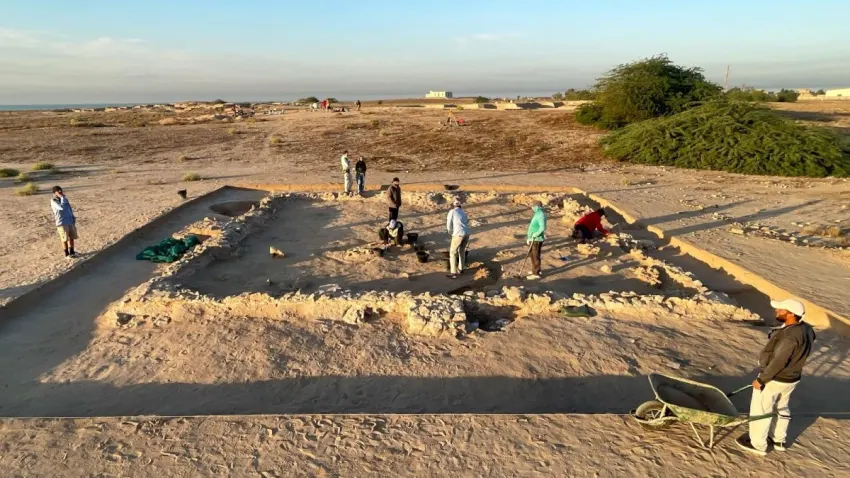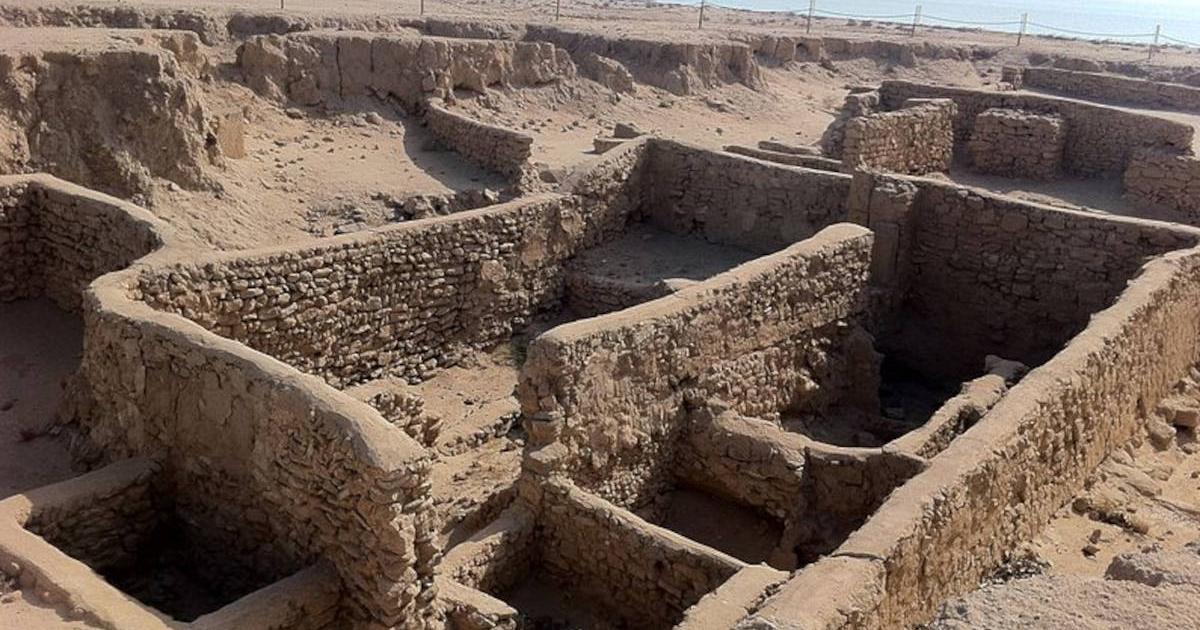A Stunning Discovery in the Sands
On the tranquil shores of Failaka Island, just off the coast of Kuwait, archaeologists have unveiled a remarkable find: a temple nearly 4000 years old, built during the height of the Dilmun civilization. This discovery is more than a mere find; it’s a vivid reminder that beneath our modern world, ancient stories lie waiting to be told.
The temple was found during the 2025 excavation season by a joint Kuwaiti Danish team, working under the auspices of the National Council for Culture, Arts and Letters (NCCAL). It lies beneath another temple revealed in previous digs, suggesting a layered history of sacred architecture stretching across millennia.
From foundations and pottery to seals, the artifacts uncovered bring to life a civilization that once thrived in the Gulf with spiritual, social, and trade networks that spanned great distances. The structure measures approximately 11 x 11 metres, modest in scale, yet monumental in meaning.
Why This Find Matters
This isn’t just another dig site; the implications ripple far beyond Failaka Island. First, the discovery underscores the sophistication of the Dilmun civilization, which until now remained partly in the shadows of history. With temples, palaces, and administrative structures stacked on each other, we glimpse a society that had both spiritual depth and civic organisation.
Second, the temple gives fresh insight into religious practice in the Bronze Age Arabian Gulf: how people worshipped, how communities gathered, and how power and faith intermingled. The presence of seals and ritual objects shows that this was a living centre of devotion, not merely a memorial.
Third, for Kuwait itself, the find adds a new chapter to its cultural story. The island’s past as a crossroads of people and ideas is now even more vivid. It shows that long before oil and cities, this land played host to vibrant human journeys and connections.

What the Temple Reveals
Location and Architecture
The temple is located on a mound known as Tell F6, adjacent to an area where earlier structures of the Dilmun period have been excavated. The mound sits east of an earlier palace and temple complex, making it part of a larger sacred precinct.
Its dimensions, roughly 11 x 11 metres, mean the building is modest in modern terms, yet the completeness of its layout is exceptional. Archaeologists found platforms, foundations, and associated artefacts that tie it to the early Dilmun period (circa 1900–1800 BCE).
Artefacts and Ritual Life
Along with the foundations, the team unearthed pottery fragments, seals, and other items that would have been part of daily spiritual life. These objects speak to ritual behaviour: offerings, inscriptions, and possibly public ceremonies. They hint at a culture that combined belief, governance, and public life in a way that resonates even today.
The Significance of the Location
The temple lies nearly atop an earlier one, suggesting that the site was sacred for generations. That layering shows continuity people revisited this place again and again, building, rebuilding, and honouring. That tells us this hill was not chosen by accident. It held meaning. It was embedded in memory.
Moreover, Failaka Island is about 20 km off the Kuwaiti coast and has been known for other ancient remains. This discovery further cements its role as a key hub in the Bronze Age Gulf world, one where trade, culture, and faith converged.
A Glimpse into Daily Life 4000 Years Ago
Imagine walking up the gentle slope of Tell F6. The air smells of sea salt and warm stone. You pass a modest administrative building, perhaps where scribes recorded grains, trade goods, or taxes. You arrive at the temple a carefully constructed space of stone, perhaps plastered, with altars or benches set aside for ritual.
Neighbours bring their gifts pottery filled with grains or oil, little seals pressed into clay to record ownership, vessels perhaps used to burn incense. A community gathers; kids run about while elders speak, priests lead chants under the Gulf sun. The sea breeze mingles with the scent of ceremony.
This temple wasn’t separate from life; it was life. The sacred and secular were intertwined. People prayed, traded, lived, died, and remembered on this same patch of ground. The dug up walls, the fragments of pots, the stamps they whisper of everyday people striving, believing, and belonging.

What This Means for Our Understanding of the Past
Rewriting the Gulf’s Ancient Narrative
For decades, the story of the Arabian Gulf has been sketched in broad strokes: pearl diving, trade, later modern development. But finds like this temple push us much further back, to a world of Bronze Age complexity, regional connectivity, and spiritual architecture.
We now see that the Dilmun civilisation wasn’t a fringe culture but a main player, with temples, palaces, and trading links that connected Mesopotamia, Oman, and perhaps the Indus region. This temple layers that story with fresh detail.
The Importance of Heritage and Preservation
Discoveries like this underscore the need to preserve and value archaeological heritage. As modern development accelerates, such ancient sites risk damage or loss. The NCCAL’s support of this dig signals Kuwait’s recognition that the past is not just a curiosity it is part of identity, memory, learning, and global heritage.
Inspiring Future Discoveries
Archaeology is rarely about singular finds it is cumulative. Every new layer, every fragment, every temple adds to the mosaic of our human story. This discovery will encourage more excavations, more research, and more curiosity about what the Arabian Gulf once was and what it can tell us about who we are.
How This Impacts Us Today
In a world of rapid change and shifting identities, ancient discoveries remind us of continuity. They remind us that human beings have long sought meaning, gathered in spaces of stone, created art, traded goods, and built civilisations.
For young people, especially in the region, this temple is a symbol if your ancestors could build meaning 4000 years ago, you too inherit potential. For students of history, architecture, or spirituality, the find is a fresh case study. For all of us, it invites reflection what will we build that lasts? What temples, in a metaphorical sense, are we erecting for future generations?
The Road Ahead
The excavation team plans further work mapping the temple in detail, analysing the artefacts, studying the layer beneath and beyond. They aim to understand not just the building, but the people, the society, and the world around it.
We might soon learn more about what rituals took place, how this temple connected with others nearby, and how trade and faith converged on this island outpost. We may discover inscriptions, understand architectural choices, and date commerce routes.
In short we’ll go from temple found to temple understood.
Conclusion
The discovery of this 4000 year old temple on Failaka Island is a gift to archaeology, to heritage, and to humanity. It reminds us that beneath modern roads and bustling cities lie quieter stones that once held the weight of belief, community, and memory.
As we gaze on that ancient site, we’re invited to think bigger about the span of time, about the people who lived before us, and about the legacy we leave behind. This temple is not just a building of the past; it is a bridge to the future. It says: We were here. We built. We believed. And now it is your turn.
Let us celebrate this discovery, protect it, learn from it, and turn our own actions into enduring echoes 4000 years hence.
Do follow Gulf Magazine on Instagram.
Also Read – ICF Kuwait’s Suhba Conference Inspires Unity, Learning, and Cultural Renewal



